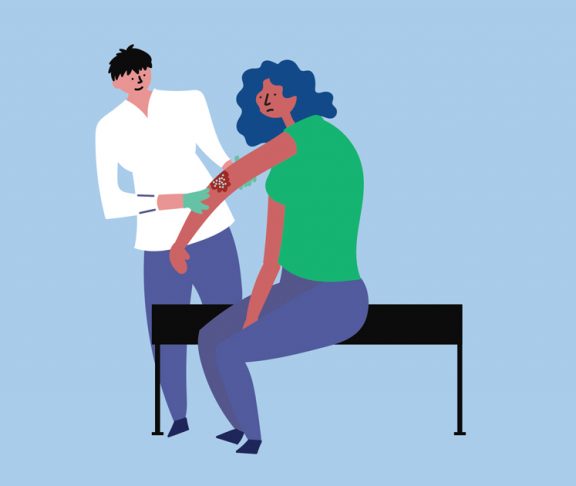
Marie Therese Burke
Head of Skincare Training at GA Distribution
Atopic dermatitis is considered a severe form of eczema. It is a chronic, long-lasting skin condition that causes the skin to become inflamed and irritated, making it extremely itchy.
Atopic means a sensitivity to allergens. It can run in families and often develops alongside other conditions like asthma and hay fever.
Atopic dermatitis occurs when a substance from outside or inside the body triggers the immune system to overreact, causing inflammation. It is this inflammation that causes the skin to become red and itchy. Scratching inflamed skin can lead to redness, swelling, cracking, scaling, weeping and crusting.
Why do we get atopic dermatitis?
Atopic dermatitis is considered a genetic condition, meaning that some people may be born with an increased likelihood of developing it. Research has shown that children with one parent with this condition can have a 50% chance of developing it. That figure can increase to 85%, if both parents are affected.
Sometimes, when your skin comes into contact with a substance in the environment that you are allergic to, it may react by starting to itch and become red. This is called contact dermatitis.
Research shows that some people with eczema, especially atopic dermatitis, have a mutation of the gene responsible for creating a natural protein called filaggrin. Filaggrin is found in our bodies and helps maintain a healthy, protective barrier on the very top layer of our skin.
Without enough filaggrin to build a strong skin barrier, moisture can escape from the skin and bacteria, viruses and more can enter. That is why babies, children and adults with atopic-prone skin can have skin that is more vulnerable to infection.
Flare ups in atopic-prone skin
In some cases, the condition fluctuates between very severe, commonly known as flare ups, and times when the condition improves, known as remission.
Some people only have small patches of dry skin, while others can experience widespread inflamed skin all over their body.
Babies will have dry, scaly, and itchy patches on their skin: most commonly scalp, forehead and face, especially the cheeks.
Children aged two and up will often have a rash and scaly, itchy patches: most commonly in the creases of the elbows or knees, neck, wrists, ankles, and the creases between the buttocks and legs.
In adults, it most often affects the hands, feet, face or scalp.

